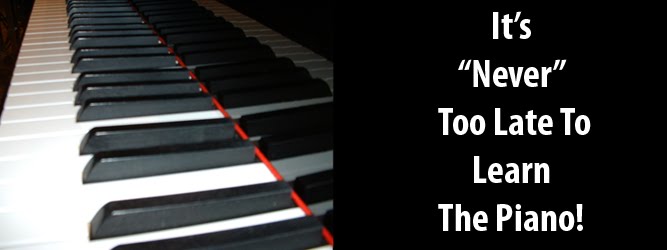So, I have been having piano lessons for half a year and I can report that I have certainly progressed and that I have every intention of continuing lessons with the right Reverend Franz Moeller.
I now have some 10 pieces in my repertoire including:
1. The first 4 Duvernoy studies
2. The first two pieces from The Children's Bach
3. A transcription of the theme from Schubert's Unfinished Symphony from John Thompson's 3rd grade book
3. A Tarantella by John Thompson also from his 3rd grade book
4. A transcription of the first motive from the Andante of Tchaikovsky's 6th Symphony
5. The Purcell Minuet from Easy Classics to Moderns Volume 17
6. All 3 movements of the Clementi Sonatina also from Easy Classics to Moderns
The main change to my technique that I have had to concentrate on is playing much more lightly than I am used to in order to get a more singing tone. Apparently, this is a common problem for players who have only ever used a digital piano. So after 6 months and the assistance of an acoustic piano in the U3, which, thankfully, is finally getting tuned as I write this post, I have started to habitually do this much to Franz's relief.
I have also been playing the following 2 octave scales with two hands in contrary and similar motion.
C, G, D, A & E major scales
A, E & D minor scales
I am very keen to be as competent a sight reader on the piano as I am on the guitar because it is so advantageous in being able to play lots of repertoire. So yesterday, I was very pleased to hear from Franz how impressed he was with my sight reading of the 2nd piece in The Childrens Bach. So I am on track there also.
I have also continued the study of jazz piano under my own steam. Currently, I am concentrating on learning standards focusing on being able to:
1. Play the melody over the chord progression using rootless shapes.
2. Improvising over those same rootless shapes and
3. Transferring those rootless shapes to the right hand for comping.
I have also continued to practise improvising the blues in different keys over various walking bass patterns using minor and major pentatonics and the diminished scale. I am absolutely delighted that after 2 and a half years of playing the piano I can finally improvise over the shuffle rhythm Root, 3rd, 5th, 6th, 5th pattern that one hears in the blues so often. It is still a little insecure but well on the way to where I need to get it. This new found independence has opened up the possibility of further interesting variations in the left hand.
So all in all I am happy with my progress and look forward to seeing where I have go to in another 6 months!













